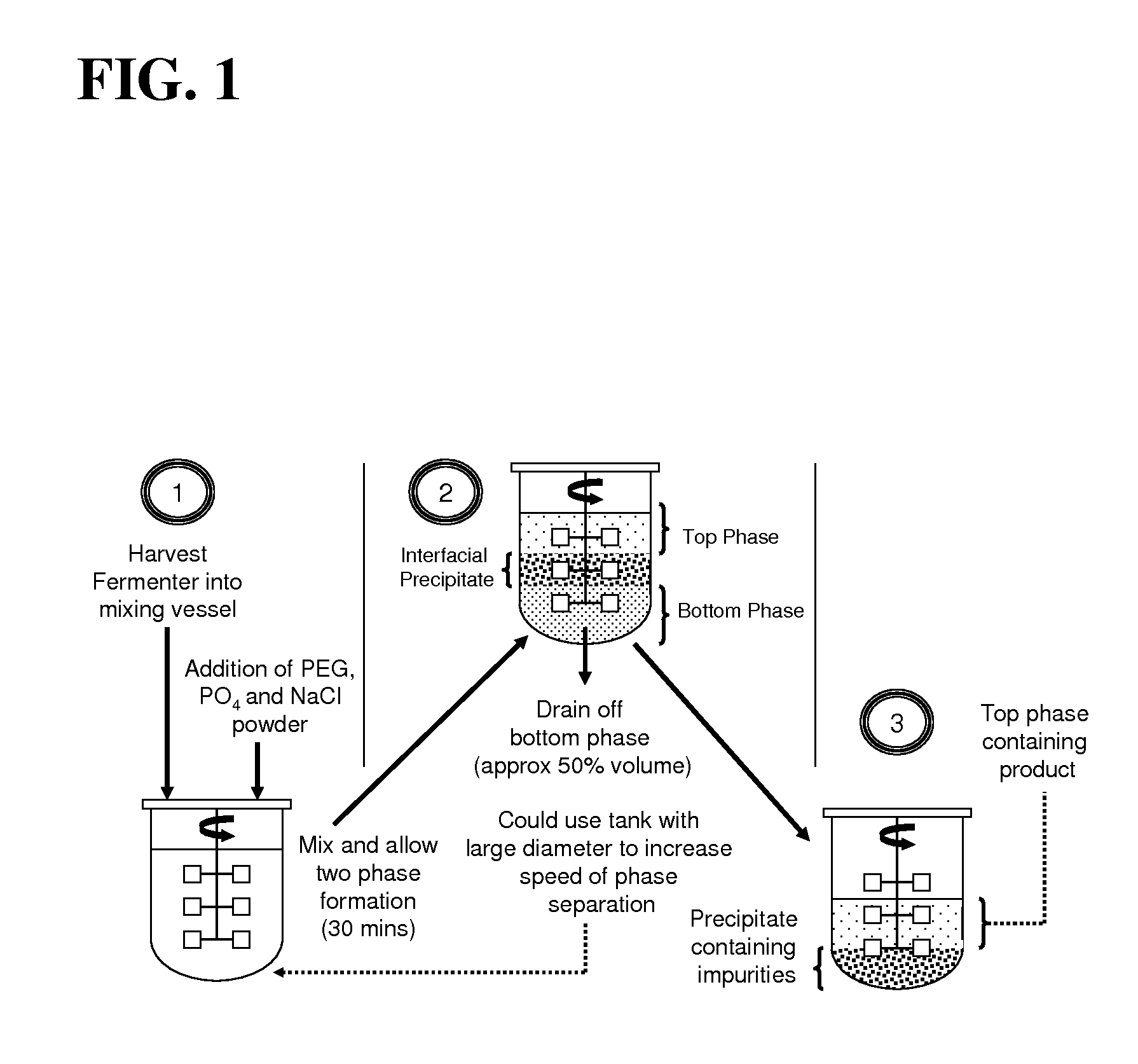Aqueous two phase extraction augmented precipitation process for purification of therapeutic proteins
a technology of therapeutic proteins and precipitation processes, applied in the field of protein purification, can solve the problems of dsp technology development not keeping pace, affecting the long-term sustainability of the current paradigm for mab purification, and needing multi-product facilities, and achieves a robust and comparable performance
- Summary
- Abstract
- Description
- Claims
- Application Information
AI Technical Summary
Benefits of technology
Problems solved by technology
Method used
Image
Examples
example 1
Primary Capture and Purification of MAb Using ATPE Assisted Precipitation
[0083]Chinese Hamster Ovary (CHO) cell culture supernatant was generated in house by GE Healthcare Biosciences (Uppsala, Sweden) through the culturing of cells from a cell line obtained from Polymun Scientific (Vienna, Austria). The cell culture supernatant was obtained by harvesting of the cell culture followed by centrifugation and depth filtration in order to remove whole unlysed cells. The cell culture supernatant was found to contain a monoclonal human IgG antibody, denoted Antibody A, at a titre of less than 1 g / L. This supernatant was concentrated by approximately ten fold using ultrafiltration giving a final mAb concentration of 4.5 g / L. This cell culture supernatant was sterile filtered using a 0.22 micron microfilter before being stored at 4° C. prior to being subjected to the ATPE assisted precipitation process.
[0084]Polyethylene glycol (PEG), with molecular weights of 1500 and 6000, along with Tris(...
PUM
| Property | Measurement | Unit |
|---|---|---|
| molecular weight | aaaaa | aaaaa |
| molecular weight | aaaaa | aaaaa |
| molecular weight | aaaaa | aaaaa |
Abstract
Description
Claims
Application Information
 Login to View More
Login to View More - R&D
- Intellectual Property
- Life Sciences
- Materials
- Tech Scout
- Unparalleled Data Quality
- Higher Quality Content
- 60% Fewer Hallucinations
Browse by: Latest US Patents, China's latest patents, Technical Efficacy Thesaurus, Application Domain, Technology Topic, Popular Technical Reports.
© 2025 PatSnap. All rights reserved.Legal|Privacy policy|Modern Slavery Act Transparency Statement|Sitemap|About US| Contact US: help@patsnap.com



